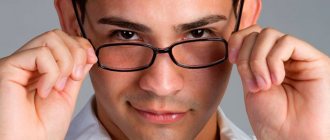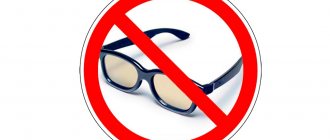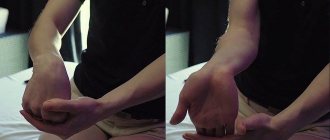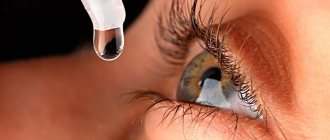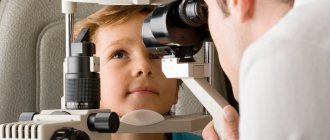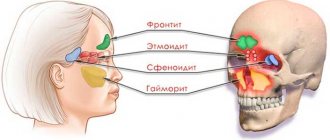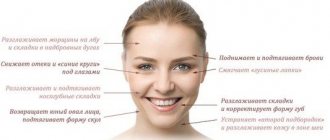Author biography
Mirzakarim Sanakulovich Norbekov is one of the famous Uzbek and Russian alternative healers. His homeland is a mountain village near Samarkand. Born in 1957, he grew up in a large family.
He studied fine arts and began working on wall painting. He was drafted into the army into the construction troops. Here he was seriously injured. He achieved his cure with the help of his own willpower and constant exercise. He became a convinced activist and developer of physical exercises to combat various diseases.
Since the 90s, together with other devotees (L. Fotina, Yu. Khvan), he has created a number of organizations teaching people self-healing. Actively promotes a healthy lifestyle among the population and personal development.
In 1998, he opened the Institute of Human Self-Healing in Moscow and became its director. Classes using his method are held here. The first writing experience began with the publication of a book in 2001, then several more printed publications were published. Since 2010, he has been the President of his own.
M. Norbekov takes part in programs on various television channels and is published in magazines.
The Institute has representative offices in 28 countries and 14 branches in the USA. The methods proposed by M. Norbekov are very popular.
Experts draw attention to the “pseudoscience” of the author’s views. This is due to Norbekov's unclear role in attracting thousands of people. There is information about the use of hypnotic influence and subjugating techniques.
There is no reliable information about the author’s academic degrees, education, or sports awards. Verification attempts do not confirm Norbekov’s participation in karate competitions.
Nevertheless, such an odious fame for the author adds to his popularity.
Features of the Norbekov method
In 2001, Mirzakarim Norbekov’s book “The Experience of a Fool, or the Key to Insight” was published. It describes in detail gymnastics to restore vision, helping to get rid of glasses forever. Since then, this has been one of the most discussed books among ophthalmologists and people with vision problems. There is still debate whether the gymnastics described in it really helps to overcome a number of eye pathologies.
The technique described in the book is based on two “pillars” - psychological and physiological aspects. Norbekov claims that decent results can be achieved not only by performing gymnastics, but also by normalizing one’s psychological state. That is, the person’s emotional background itself must be favorable for completing tasks - only in this case everything will work out. You need to think of yourself not as a sick person, but on the contrary, imagine that everything is fine with your eyes.
According to the author, you can improve your psychological state with the help of auto-training. Norbekov notes that a person should take special care of his emotional health.
Norbekov advises to perceive the world around us as a close and related environment. The book also contains gymnastics, which consists of performing simple actions with the eyes. They do not put a strain on the organs of vision and do not overstrain the eyes. Thus, Norbekov’s technique is not based solely on self-hypnosis. This is a combination of gymnastics and self-hypnosis. Perhaps it is for this reason that Norbekov’s technique is so popular.
Book “The Experience of a Fool or the Key to Insight”
It is better to read the book and form your own opinion. With a harsh title, the author criticizes himself and sick people for missed opportunities in restoring health. Has a negative attitude towards laziness and lack of desire to help oneself restore vision.
There are approximately equal numbers of supporters and opponents of the technique. This is greatly facilitated by M. Norbekov’s lack of a medical diploma.
The book offers the interested reader an introduction to the healing method. Instructions on physical exercises are provided, their expediency and practical significance are explained.
Some advice is intended to support a person’s self-affirmation and eliminate indecision and lack of will. Of course, the book is interesting for many readers, even for preventive purposes, and the author deserves gratitude for his work.
The essence of Norbekov’s technique
It is interesting that M. Norbekov himself considers his developed methodology not to be therapeutic, but to teach life. He considers
improvement of vision and freedom from glasses is a “side effect” of the patient gaining confidence in his mental and physical strength,
improving mental well-being, a new sense of being in nature.
The author skillfully combines in the healing system:
- general physical exercises;
- working with the eye muscles (based on the experience of American ophthalmologist William Bates);
- oriental massage practice or, according to modern views, the effect on reflexogenic zones;
- auto-training and self-hypnosis.
The author's attention to the restoration of posture and the correct position of the spine can be traced. This improves nutrition of all head organs and brain centers.
Authors of eye exercise complexes
There are quite a large number of different techniques that were developed by ophthalmologists in different countries and at different times. There are as many of them as there are different diets for losing weight. Some of them, in fact, copy each other and differ only in minor nuances. In medicine, several sets of exercises are used that have proven their effectiveness over a long period. Doctors are quite wary of Tibetan and Taoist methods, as well as exercises from the yoga system. The founders of the most effective methods of eye exercises can be called the following authors:
- Bates;
- Norbekov;
- Zhdanov;
- Avetisov;
- Corbet.
Bates technique
was the first development. . The theoretical premises of William Bates were later recognized as incorrect, but some of his exercises provide effective help for many eye pathologies. The basis of Bates eye gymnastics are exercises to relax the eye muscles, as well as psychophysical training.
William Bates Method
In particular, Bates suggested that abandoning corrective optics and regular exercise would contribute to the complete restoration of vision. Soon the statement was partially refuted, because There were positive dynamics of improvements in visual function, but did not give 100% results.
The author suggests closing your eyes, mentally imagining beautiful landscapes, which causes relaxation of the eye muscles, or mentally drawing something on an imaginary sheet of paper.
Norbekov's eye exercises
This technique contains exercises to develop various eye muscles. Exercises for the eyes according to Norbekov - These are rotational movements of the eyeballs, orientation of the gaze up down and from left to right. Some exercises are designed to switch the eye's focus from near to distant objects and vice versa. Some of the exercises are borrowed from the methods of William Bates.
Gymnastics according to Norbekov
Zhdanov's practice
The exercises he developed make it possible to restore normal vision to some extent in case of eye pathologies, relieve fatigue from the visual organs, and are very helpful during the rehabilitation period after surgical operations. Exercises according to Zhdanov’s method are divided into separate complexes for nearsighted and farsighted patients.
Zhdanov's technique
Just like Norbekov, Professor Zhdanov borrowed some of the exercises from the Bates technique, supplementing it with the main provisions of Shichko’s psycho-emotional model.
Avetisov's eye gymnastics
Gymnastics for the eyes developed by Avetisov are primarily intended for schoolchildren who strain their eyes a lot and often. This technique is used to prevent and improve vision. The Avetisov complex consists of three groups of exercises:
- the first group – improves blood circulation in the tissues of the eye;
- the second group is designed to strengthen the eye muscles;
- the third group improves accommodation.
Gymnastics Avetisov
Exercises Corbet
Austrian ophthalmologist Margaret Corbet developed her theory of vision improvement, according to which you can independently change the focal point of the eye and, ultimately, learn to do without glasses. There are no specific exercises, but there are certain rules, following which you can achieve a significant improvement in vision.
Description of exercises
The key to success is determined by the consistency and correctness of the exercises.
Exercise No. 1
Keep your head straight, without straining. Without moving your head, raise your gaze as high as possible, mentally passing through the eyebrow and forehead. Return to starting position.
Similarly, lower your eyeballs as far as possible and mentally “examine” your throat from the inside. Look forward.
Exercise No. 2
Without changing the position of the head, working only with your gaze, tilt your eyeballs as far as possible to the left, then to the right. At the same time, try to mentally penetrate inside the ear.
According to ancient Eastern medicine, these actions cleanse the energy channels of the head and liver and have a general healing effect.
Exercise No. 3 – “Butterfly”
Using one eye, “draw” a diagonal line from the lower right corner to the upper left, then go down and from the lower left to the upper right corner.
Repeat similar movements from the lower left corner to the upper right, go down to the right, then look up at the upper left corner.
After finishing the paired exercise, you should relax your eyes and blink your eyelids lightly. In recommendations
attention is paid to the formation of the largest possible figures, then the effect on the eye muscles will be soft and gentle.
Exercise No. 4 – “Figure Eight”
With your head motionless, make movements with your eyes along the line of a large “figure eight” figure, drawing it first in one direction, then in the other. To relax, you need to lightly blink your eyelids.
Exercise #5
Performed in a quiet room, in a calm state. The exercise is especially indicated for myopic people, since it strengthens the lateral muscles.
Try to concentrate the gaze of both eyes on the tip of the nose, then slowly move forward to the bridge of the nose and try to see what is on the sides on the right and left. At the same time, you are not allowed to move your eyes to the side.
You should do 8 slow, smooth repetitions.
Exercise #6
Place both index fingers on the tip of the nose. Fix your gaze on your fingers. Slowly spread your fingers horizontally to the sides, and try to follow them with your peripheral vision. The left eye should be concentrated on the left finger, the right eye, respectively, on the right.
Repeat three times and rest.
Exercise No. 7 – “Big Circle”
Imagine a clock dial before your eyes. Gradually, starting from the number 12, mentally move your eyes in a circle clockwise, then back. Movements should be smooth. The diameter of the circle gradually increases, but it is advisable to keep the circumference smooth and beautiful.
It is recommended to repeat the exercise, making circles with your eyes across the sky.
Important Notes
- The whole complex must be done first with open eyes, then closed, and finally mentally. The exercises are performed strictly in the given sequence, since they are built on the principle of increasing load;
- During the exercises, squinting, facial movements, and facial muscles are not allowed;
- Blink as much as necessary;
- After completing the gymnastics, limit your visual load for 15 minutes;
- Always do relaxation exercises and palming;
- Lenses and glasses must be removed before practice.
Eye gymnastics according to Norbekov is a preventive measure. Any self-medication can be harmful to health. Consult your physician before beginning any health practices. Look for more complete and detailed information regarding Norbekov’s health system on the pages of his books.
Massage after eye exercises
Massage of reflexogenic zones serves to consolidate the effect on the muscle groups of the eyes.
To do this, it’s easy to find the right points on your face:
- in the center between the eyebrows there is an unpaired point;
- on both sides on the wings of the nose there are paired dots;
- in the middle of the pit under the lower lip above the chin there is an unpaired point;
- on the temples in the pits there are paired dots;
- above the forehead in the center in the area of the cape of hair - an unpaired point.
Alternately, make smooth pressing movements with your fingers, gradually intensifying them until slightly painful.
A significant addition to the technique of performing the technique is the author’s recommendation to perform the exercises in three stages:
- the first - with open eyes;
- second - close your eyes;
- the third is to do everything mentally.
Exercises for farsightedness
A special set of exercises allows you to keep the eye muscles toned and increase blood flow in the organs of vision.
- sitting in an even position with a straight back, you need to slowly turn your head and gaze direction to the left until it stops. Fix at the end point for 2-3 seconds, then return your head to the starting position. Perform a turn in the opposite direction. Do the exercise 12-15 times;
- Place your finger about 25 centimeters from your eyes. Carefully examine the fingertip for 10-15 seconds, then sharply shift your gaze to a distant object. Perform 15 repetitions;
- massage the back of the head and neck with your hands, combining rubbing with light stroking. Perform for 3-5 minutes;
- Draw circles and figures of eight with your eyes clockwise and vice versa. Perform the exercise for 2-3 minutes.
Positive dynamics when performing eye exercises are not immediately observed. Improvement in vision is confidently observed in 80% of patients 1.5-2 months after the start of classes.
Principles of Norbekov’s technique
Norbekov's eye gymnastics are quick to learn and easy to perform. Fine motor skills of the fingers are added to the overall effect during massage movements, which allows for overall calm, relaxation, and the ability to concentrate. Patients note a positive effect on well-being and the development of speech function.
There are general rules that are not recommended to be violated during classes:
- When performing exercises on the eye muscles, it is important not to move your head, only your gaze.
- Physical stress on the eyes should not be accompanied by tension or squinting. When you feel tired, you should blink and relax.
- To perform a massage, you should choose a comfortable finger pad.
- The massage is carried out with soft movements without rubbing.
- Based on the strength of the impact, the patient should feel pleasant pressure or mild pain.
- It is necessary to follow the sequence of exercises; they are offered from less complex to more difficult for the muscles.
- To achieve results, you should start doing eye gymnastics only with a positive emotional attitude.
Top 5 eye exercises for cataracts
- This exercise is time-tested and has been used to treat cataracts since ancient China. Warm up your hands by rubbing them against each other, then massage the upper eyelids 20-30 times, then start massaging the superciliary area, eyes should be closed. After performing the massage, without opening your eyes, move your eyeballs left/right 20-30 times. Perform 2 times a day.
- Blinking quickly for 20-40 seconds, this eases the condition of the eyes and helps moisturize the mucous membrane.
- Another effective exercise for cataracts is “draw with your nose”; the patient needs to draw any shapes in the air. In addition to having a positive effect on sore eyes, it helps improve blood circulation.
- Look at the lamp and shake your head, gradually increasing the motor amplitude, trying to relax the spine as much as possible. Lesson duration 20 minutes.
- Stretch your arms forward and begin to move your fingers, alternately bringing your palms closer to your face and then moving them away, without looking away. Duration 2 minutes.
Gymnastics for the eyes according to Norbekov - benefit or waste of time?
One can be skeptical about the system of exercises proposed by M. Norbekov, but there is no doubt that it will not cause harm and can be useful as an additional means in the general therapeutic complex of measures for the treatment of myopia, farsightedness, and astigmatism. Especially in the initial stages.
The author tries to prove the feasibility of the method for diseases such as optic nerve atrophy and macular degeneration. Such diseases have an organic basis of pathology, and therefore require a different therapeutic effect.
An important component of M. Norbekov’s methodology is lost in disputes about effectiveness.
After all, the author, unlike other gymnastics complexes for the eyes, offers another, no less important part - a psychological attitude towards healing and health. This cannot be missed in the book. The author recommends that patients perceive themselves not as sick, but as already recovered.
This is achieved by a positive emotional state of mind, an open attitude towards the world, cultivating a sense of friendship and love for nature and people.
M. Norbekov highly appreciates the importance of the health of the spine or the “muscular corset” of the body in the proper functioning of all systems, including the effect on vision.
Exercises for the upper shoulder girdle
In this part of the complex, Norbekov’s method of increasing height involves using only the upper torso:
- Shoulders forward, chin tucked towards your chest. Bend your shoulders and head 15 times forward and 15 times back. Each movement is performed for six seconds. You need to reach your chin to your chest without moving away, then stretch towards your stomach. The upper part of the spine should bend like a bow, and at this moment you need to pull your shoulders forward and towards each other, while tensing. Don't raise your shoulders. Without stopping, proceed to perform back bends. First, the head rests on the back, stretches down, and the shoulders begin to pull back towards each other. Breathing is as follows: forward movement is done while exhaling, backward movement is done while inhaling.
- Raising and lowering the shoulders. The head does not move, the spine is straight. Pull your arms down with force, lowering your shoulders. The exercise is done in a similar way by lifting the shoulders up.
- Hands at your sides. One shoulder is directed upward, the other - downward. The head tilts following the shoulder that follows. Each time, try to slightly increase the tilt to the side. The same is done in the other direction. You can breathe freely. This exercise is repeated 3-6 times in both directions.
- Circular movements of the arms are performed 15 times. You can imagine a steam locomotive. Your shoulders are wheels, movements begin gradually, slowly, and over time their circle expands. It is recommended to breathe evenly and effortlessly.
- Hands at your sides, tilts to the right and left. The exercise is done in a standing position. Try to reach your right foot with your right hand, and your left foot with your left. Of course, you won’t reach your feet, but the main effect will be achieved – the spine will become more flexible. The essence of this exercise is that when the arms do not leave the body, the upper part of the spine bends. The tilts are repeated 10 times in each direction. Bending is done while exhaling, lifting - while inhaling.
The role of posture in improving vision
M. Norbekov calls correct posture a “muscle corset” for the spine. It is no secret that the roots extending from the spinal cord provide nutrition to all internal organs. Therefore, it is not surprising that in the general set of exercises the author included movements for the joints and lateral muscles of the back, strengthening the vertebral ligaments and preventing the development of osteochondrosis.
All exercises begin with a load on the arms, then on the legs. Consistency is a mandatory component of the system!
First, exercises are shown for the upper spine, then there is a transition to the underlying vertebrae. The load, according to the author, should be distributed evenly. The effect does not depend on the person’s physical fitness.
Each exercise is repeated up to 10 times. It is suggested to monitor your breathing: inhalation is performed against the background of a relaxed state of the muscles, and tension follows when exhaling. The speed of movement can be selected individually. Results appear with regular exercise in 2 – 3 weeks.
Zhdanov complex
This technique includes all the best and effective eye exercises.
First of all, the complex is designed for people suffering from myopia and astigmatism, but you can also perform the exercises with cataracts. It is believed that regular implementation of the complex inhibits the development of the disease. Examples of exercises:
- draw the number eight with your eyes;
- strongly squeeze and unclench your eyelids at a fast pace.
Recommendations:
- do exercises 3 times a day;
- exercises are done at a calm pace without sudden movements.
Focusing on sensations
Norbekov forbids practicing in a sad mood and is an ardent opponent of laziness. Great importance is attached to understanding the importance of exercise, listening to your feelings, connecting attention to the feeling of coldness, warming, numbness in different parts of the body.
Along with physical improvement, personal growth occurs. The author claims that after a course of gymnastics, a person’s spiritual mood changes, self-confidence appears, and many managed to achieve professional success.
On the subject: Vitamins for the eyes - which are the best?
Pros and cons of the technique
To talk about the effectiveness of the technique, it is not enough to read the author’s books. Even Norbekov’s admirers would like to know about the results of clinical trials. This requires time and a basic medical facility.
We can talk about effectiveness scientifically when there is a statistically confirmed improvement in vision in a group of people who used the Norbekov system, and the absence of such results in another similar group in which the recommendations were not used. Such information is not provided anywhere.
In addition, many people doubt the multimillion-dollar business structure built by Norbekov on the propaganda of his system. Doctors claim that people’s gullibility is being exploited and call the actions of the author of the system quackery.

